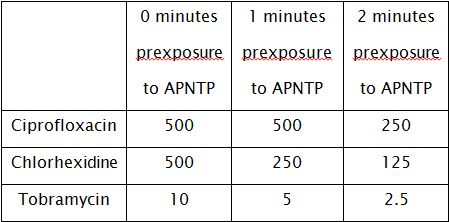
Nid’a H. Alshraiedeh
Jordan University of science and technology, Jordan.
Title: In vitro evaluation of the impact of APNTP pre-exposure on antibiotics susceptibility of Pseudomonas aeruginosa biofilms.
Biography
Biography: Nid’a H. Alshraiedeh
Abstract
Statement of the Problem: Biofilms are the predominant mode of bacterial growth in the environment. They are implicated in approximately 80 % of chronic human infections (Kalmokoff 2006; Francolini 2010). its formation is associated with high tolerance to conventional biocides and antimicrobial agents (Nandakumar 2004; Kamgang 2007). Tolerance could be attributed to impaired diffusion, neutralising mechanisms, presence of persister cells, acquiring resistant genes and other factors that could work synergistically to develop resistance (Costerton 1999; Parsek 2004).
Findings: A preliminary study was conducted to assess the potential use of in-house designed kilohertz (kHz)-driven atmospheric pressure non-thermal plasma (APNTP) as adjuvant therapy with other available antimicrobial agents that are commonly used for the control of Pseudomonas aeruginosa infections, and whose activity are known to be attenuated in the presence of biofilm matrix components. Synergy between APNTP pre-exposure and the antibiofilm activity of three antimicrobial agents (ciprofloxacin, tobramycin and chlorhexidine) was demonstrated. Pre-exposure of a 48 hour biofilm to APNTP increased the sensitivity of Pseudomonas aeruginosa biofilm to the tested antimicrobial agents. Further studies have been conducted to understand the factors that increase the sensitivity of APNTP treated biofilm to tobramycin. Effect of initial bacterial titers on sensitivity to tobramycin was negligible. The protective effect of EPS was also studied and found that Pre-exposure of exogenous DNA and alginate to APNTP did not appear to restore the sensitivity of Pseudomonas aeruginosa to antimicrobial agents.
Conclusion & Significance: This study showed a promising results for possibility of use sub-optimal exposures of APNTP as adjuvant topical therapy with conventional antimicrobials agents. Further studies are required to explain the mechanism underlying this synergy in order to provide important information for the design and optimization of non-thermal plasma sources for infection control.


